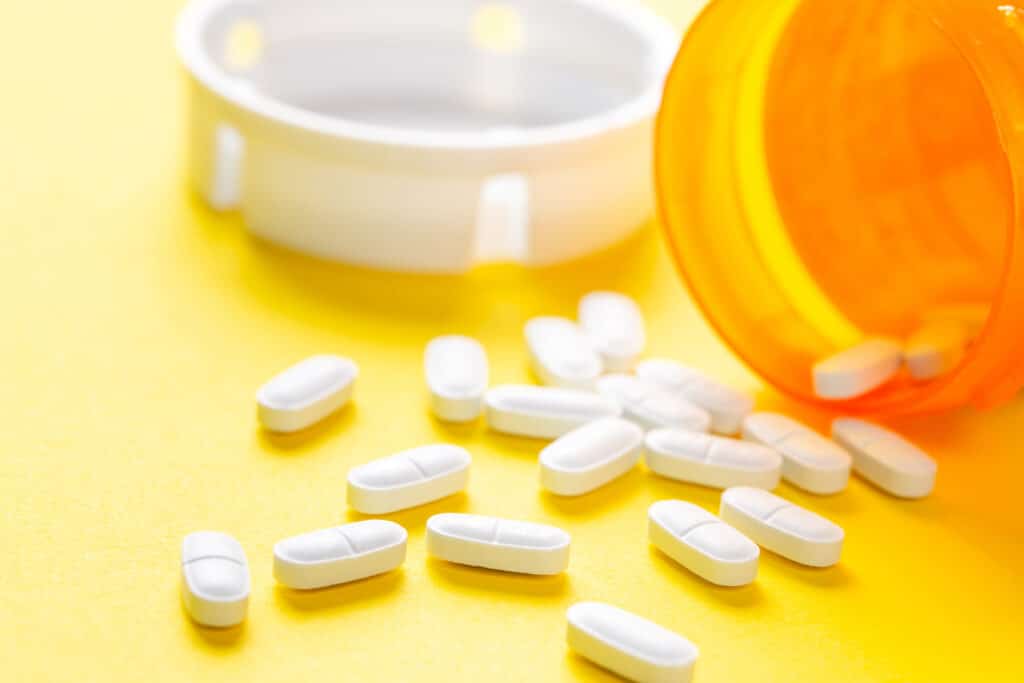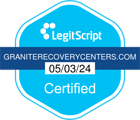 Zoloft is one of the most popular drugs used to treat depression, panic attacks, obsessive-compulsive disorder and other mood disorders. According to the National Institutes of Health, Zoloft, or Sertraline, is a selective serotonin reuptake inhibitor, or SSRI. Basically, that means that Zoloft helps your brain transmit messages between neurons better, which leads to clearer thought processes and hopefully better mental health. Zoloft is one of the most prescribed antidepressants in the United States. The following description of Zoloft discusses its pluses and minuses along with the problems that you could face if you use it incorrectly or too often.
Zoloft is one of the most popular drugs used to treat depression, panic attacks, obsessive-compulsive disorder and other mood disorders. According to the National Institutes of Health, Zoloft, or Sertraline, is a selective serotonin reuptake inhibitor, or SSRI. Basically, that means that Zoloft helps your brain transmit messages between neurons better, which leads to clearer thought processes and hopefully better mental health. Zoloft is one of the most prescribed antidepressants in the United States. The following description of Zoloft discusses its pluses and minuses along with the problems that you could face if you use it incorrectly or too often.
SSRIs in general, and Zoloft specifically, are not medically addictive, but they are often abused. An article by the National Center for Biotechnology Information states that prescription drug abuse is increasing in the country. As more people use Zoloft and other prescription SSRIs, the more misuse likely occurs.
How Zoloft Works
An SSRI, including but not limited to Zoloft, increases the levels of serotonin in the brain. Serotonin carries messages between neurons in the brain, after which they are absorbed back into the neurons. Zoloft stops the reabsorption process, which leaves more serotonin available to carry messages, leading to improved transmissions and a healthier brain.
Many people have found Zoloft to be a highly effective medication that helps with a variety of mental health issues. Others have responded poorly to the medication and end up experiencing complications or severe side effects. Regardless of how helpful or unhelpful Zoloft is to you, many patients experience difficulty when they decide to quit the medication. Zoloft is not typically addictive, but you may experience withdrawal-like symptoms when you decide to quit taking Zoloft. At Granite Recovery Centers, we can help you safely and effectively stop taking Zoloft and get back to your normal life.
Granite Recovery Centers offers a detox program that will help you clear the withdrawal symptoms that come along with coming off of antidepressants. Granite Recovery Centers provides medical detoxification for people who do not need immediate medical intervention, are not a danger to themselves, and are capable of self-evacuation in the event of an emergency. Contact us to learn more about outpatient and residential programs available for those with drug dependency.
Facts About Zoloft
As mentioned before, the prevalence of Zoloft and other prescription SSRIs has increased at an amazing rate over the past two decades. According to Harvard Medical School, the use of SSRIs, including Zoloft, increased by 400% between 1988 and 1994 and then again between 2005 and 2008. The numbers just keep increasing.
The first thing that you should do prior to taking Zoloft is understand the prescription facts related to the drug. Zoloft is usually prescribed to be taken once per day and with or without food. Dosages are usually between 50mg and 200mg depending on the severity of a person’s mental health complications as well as their age and size.
You should not take an extra dose of Zoloft if you miss a day. You should avoid drinking alcohol, using illegal drugs or using another antidepressant while taking Zoloft. It is vital to be aware of the common and uncommon side effects so that you know them when they appear.
Zoloft comes in either pill or liquid form, and when you find it in liquid form, it must be diluted. Zoloft can be found without a prescription, but you should only take Zoloft when prescribed and follow the guidelines from your doctor and pharmacist. You should take the medicine one time per day, unless otherwise directed by your doctor, and at the same time throughout your usage. Remember that severe issues can form when you stop taking Zoloft after continuous use, including withdrawal-like symptoms. A doctor will help you taper off your use to reduce these complications.
Side Effects of Zoloft
The National Institutes of Public Health did a survey to collect real-world data on SSRI side effects. That study concluded that 38% of those questioned experienced at least one side effect related to Zoloft. These are the three most reported side effects:
- Sexual dysfunction
- Sleepiness or drowsiness
- Weight gain
While the above three side effects are the most common complaints to a doctor after starting Zoloft, they are by no means the only or most severe. The most severe potential side effects, though uncommon, are ones that you should call your doctor immediately if you experience them. They include:
- Seizures
- Blurred vision, tunnel vision or eye pain
- Headache, memory issues, severe weakness or confusion
- Manic episodes including racing thoughts, increased energy, extreme happiness, irritability or unusual risk-taking behavior
- Agitation
- Hallucination
- Fever, sweating, nausea, vomiting
More common side effects, other than the three listed above, are as follows:
- Anxiety or agitation
- Loss of appetite
- Tremors or shaking
- Sweating
- Insomnia
- Impotence
Side effects are common even in drugs that work well and give you the relief you need. You have to figure out if the side effects that come from using Zoloft are worth the relief that it provides. In addition, remember that though Zoloft is not technically addictive, coming off of it can be difficult for the body and mind.
Half-Life of Zoloft
A common question that people ask is how long a drug like Zoloft will stay in their system. The “half-life” of a drug refers to the amount of time that half of a drug’s traces are removed from a person’s system. This is important because the half-life of a drug is instrumental in when to take the next dose and how effective the drug continues to be.
Zoloft has a half-life of between 24 and 26 hours. This means that after a day, half of the traces of the drug metabolize and exit your body. Another 24 hours later, and the drug will reduce to 25%, and so on until the drug is removed from a person’s system completely. It is important to note that Zoloft is taken every 24 hours, so you add a dose to your system when the previous does is still only half gone. That is an indication that subsequent doses build on each other and that the drug is working more effectively on the third day than the first day.
It is also important to note that after an extended time of taking daily doses of Zoloft, the power of the drug only increases as doses begin to build on each other. Stopping Zoloft “cold turkey” is a very difficult thing to do, especially after your body has become used to its effects. At Granite Recovery Centers, we understand the difficulty of stopping a drug and the potential physical and emotional symptoms that come along with it. Our experts and specialists are here to help make the transition as easy as possible.
Factors That Influence How Long Zoloft Stays in Your System
The half-life of Zoloft is an estimate that can depend on a few factors. The 24 to 26 hours guideline is accurate, but there is also a little more that goes into it. Some of the factors are self-evident, and others are a little more subtle. Here are some of the key factors that influence the length of time that Zoloft stays in your system:
- Dosage – Larger doses tend to stay in your system longer than smaller doses.
- Age – Zoloft tends to leave the system of younger patients more quickly than it does older ones.
- Sex – Zoloft tends to stay in a woman’s body longer than in a man’s body.
- Genetics – Some people have a genetic predisposition to the drug leaving their body either more quickly or more slowly than others.
- Liver disease – If you suffer from liver disease, you will probably have more trouble ridding your body of Zoloft than people with a healthy liver.
Prior to taking Zoloft, you do not need to have eaten anything like you do for many other drugs. The effect of food in the metabolizing and effectiveness of Zoloft has been shown to be negligible in tests. Likewise, a person’s size and rate of metabolism do not greatly affect how long Zoloft stays in your system.
How Long Zoloft Stays in Your Urine and Feces
The above information is clear on the length of time that Zoloft stays in your bloodstream, but it is also important to know how long Zoloft is detectable in your urine and feces after taking a dose. Studies show that approximately nine days after ingesting a Zoloft pill, 44% of the dose will still be found in your feces and urine. This is significant because it shows how long the drug is still detectable after ingestion.
Abuse of Zoloft
It would be a mistake to think that because Zoloft is not addictive, people do not abuse the drug. Zoloft is not one of the controlled substances on the list of scheduled substances, and this can actually make it easier to find. Remaining off this list allows the drug to be less regulated and therefore more readily available by illegal means. When someone takes a prescription drug without regard to dosage and timeframes, the results can be disastrous.
More people find themselves misusing these drugs by taking more than the prescription says. Zoloft helps a lot of people, and it’s been the most often common drug for depression on the market. As such, people let their guard down and are not careful and safe in their usage of Zoloft.
At the first sign that you or a loved one is abusing a drug like Zoloft, the first step is to find help. Find someone who can diagnose the addiction as well as the mental health disorder that led to the drug abuse.
Granite Recovery Centers
At Granite Recovery Centers, we offer a client-driven approach to rehab and detox. We believe that every addiction and every client is different. There is no such thing as a cookie-cutter approach to recovery. Many people who struggle with abusing a drug like Zoloft also struggle with mental health disorders. We have the resources and expertise to help you both with the use and withdrawal from the drug as well as the underlying mental health disorder that led you to Zoloft in the first place. Because Zoloft produces withdrawal-like symptoms, we offer a medically monitored detox program where patients are able to come off of the drug slowly and in an observed environment. Withdrawal is always difficult, but it is also the first step toward getting your life back. We are here to help you do just that.















